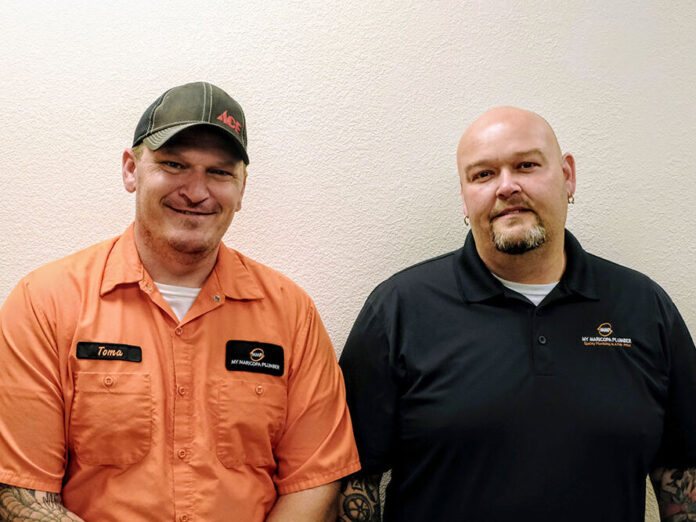
By Terry Leamon
My Maricopa Plumber
Periodically giving your water softener a checkup will keep it running efficiently and help you avoid maintenance costs associated with hard water. Here are some DIY best practices:
Avoid salt bridges and salt-mushing
A salt bridge occurs when a hard crust forms in the brine tank and creates an empty space between the water and the salt, preventing the salt from dissolving into the water to make brine. Without brine, the resin beads that soften your water can’t do their job. Common causes of bridging include high humidity, temperature changes and using the wrong salt. You may have a salt bridge if your salt tank appears full but you know your water isn’t soft. The quickest way to test for a salt bridge is to take a broom handle and carefully push on the top of the salt, using a little bit of pressure to break it up.
Salt-mushing is the more serious of the two problems and happens when dissolved salt recrystallizes and forms a sludge on the bottom of the brine tank. This thick layer of salt keeps the water softener from properly cycling through the regeneration process, leaving your water hard and creating a serious blockage in the tank. To avoid these salt issues, opt for high-quality salt pellets, which greatly reduce the potential for any problems — especially salt-mushing. Additionally, don’t overfill your brine tank with salt. Keeping it half-full prevents older salt from sticking to the walls of the tank. It’s also important to manage the humidity level around your water softener.
Be selective with your salt choice
There are three basic types of water softener salt: rock, solar and evaporated. Rock salt, the least expensive, contains higher levels of insoluble minerals or impurities. Over time, this can result in a muddy tank, decreasing the softening efficiency while leaving impurities in your water. Solar salt, which is much more
soluble than rock salt, is obtained by the evaporation of seawater and is found in both pellet and crystal form. The best option is evaporated salt, which is obtained through a combination of mining and evaporation. This is the purest form of salt at 99.99% sodium chloride.
In general, look for high purity salts, which will leave less storage tank residue lowering the likelihood of salt bridges and salt-mushing and resulting in less maintenance. High-quality salts — and salts in pellet form — help eliminate bridging problems. Additionally, many leading brands also offer salt products that address specific issues, such as high iron concentration, rust stains and sodium alternatives.
This column appears in the February issue of InMaricopa.













![Alleged car thief released without charges Phoenix police stop a stolen vehicle on April 20, 2024. [Facebook]](https://www.inmaricopa.com/wp-content/uploads/2024/04/IMG_5040-218x150.jpg)

![Maricopa’s ‘TikTok Rizz Party,’ explained One of several flyers for a "TikTok rizz party" is taped to a door in the Maricopa Business Center along Honeycutt Road on April 23, 2024. [Monica D. Spencer]](https://www.inmaricopa.com/wp-content/uploads/2024/04/spencer-042324-tiktok-rizz-party-flyer-web-100x70.jpg)

